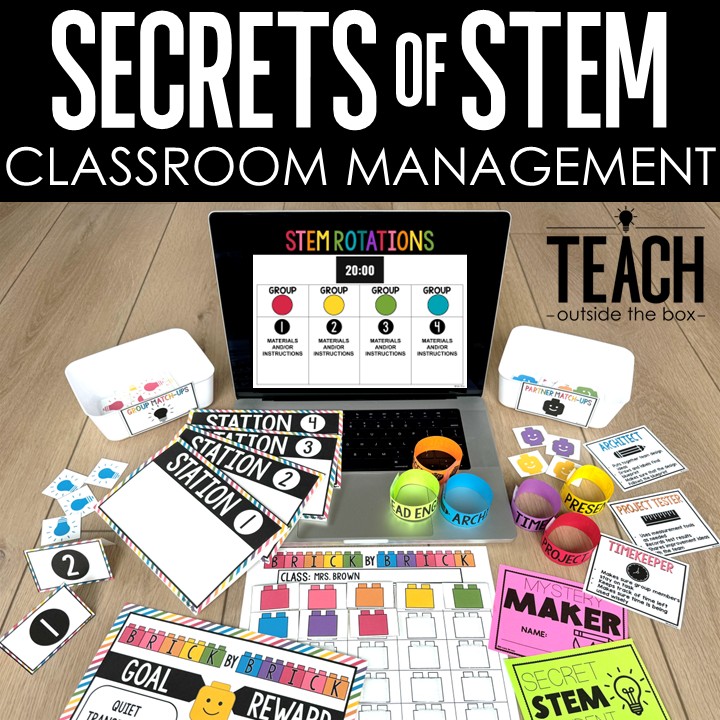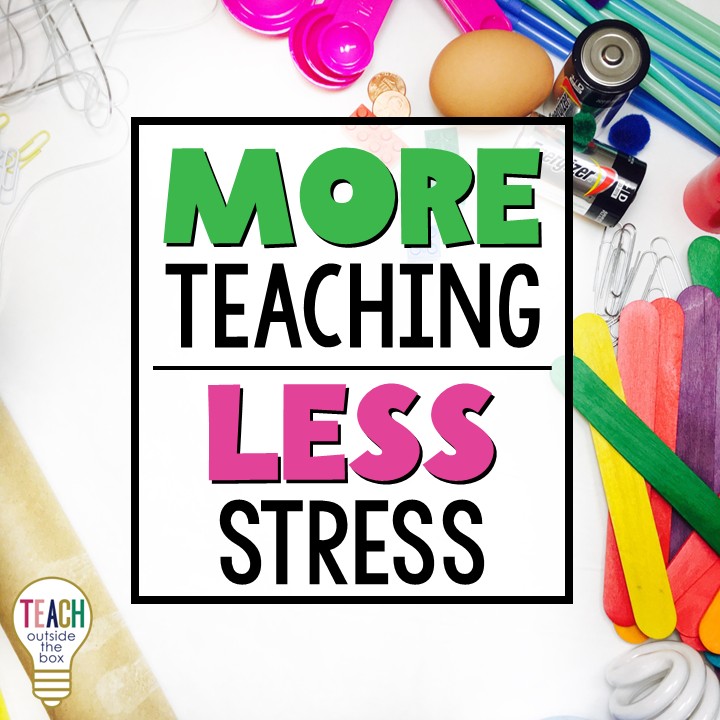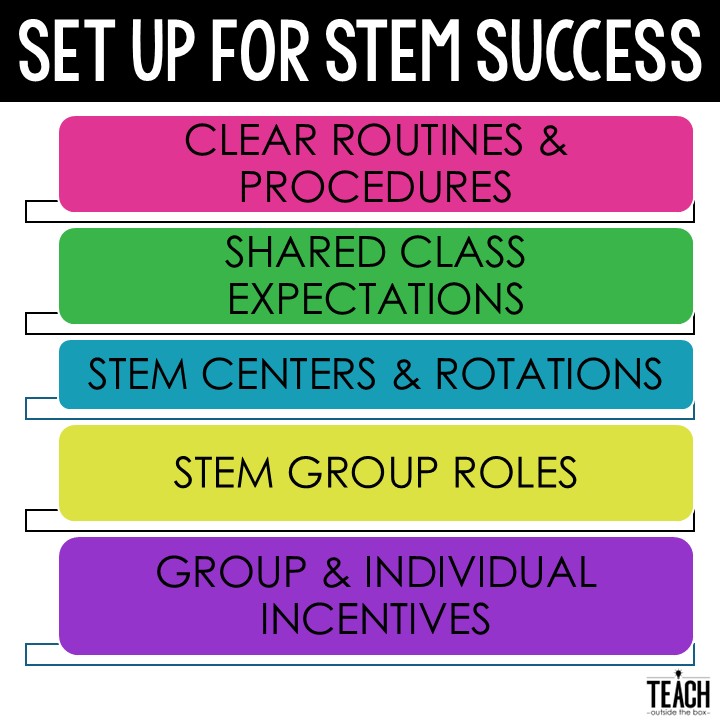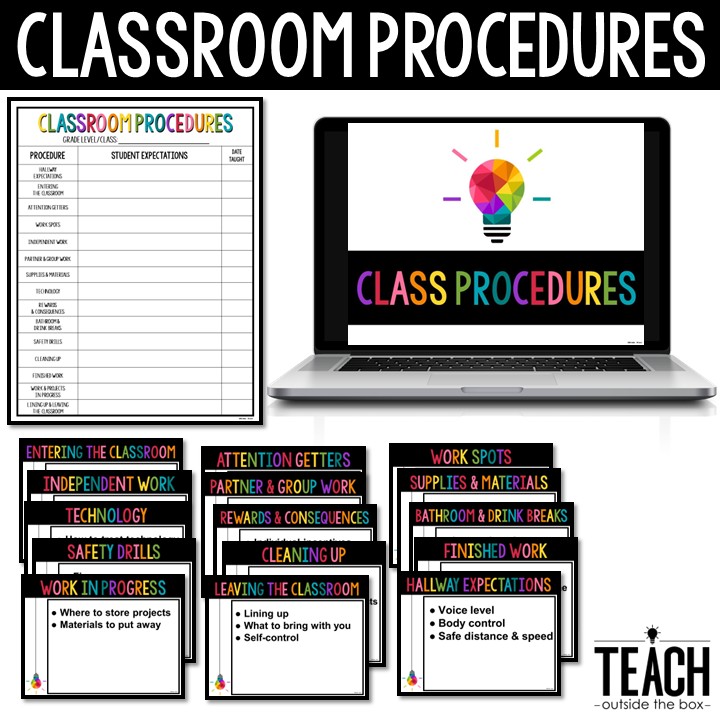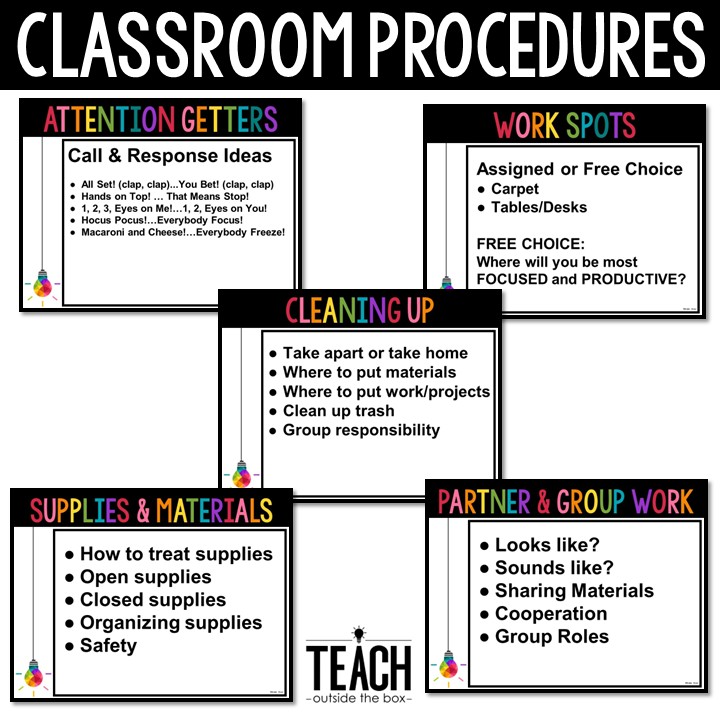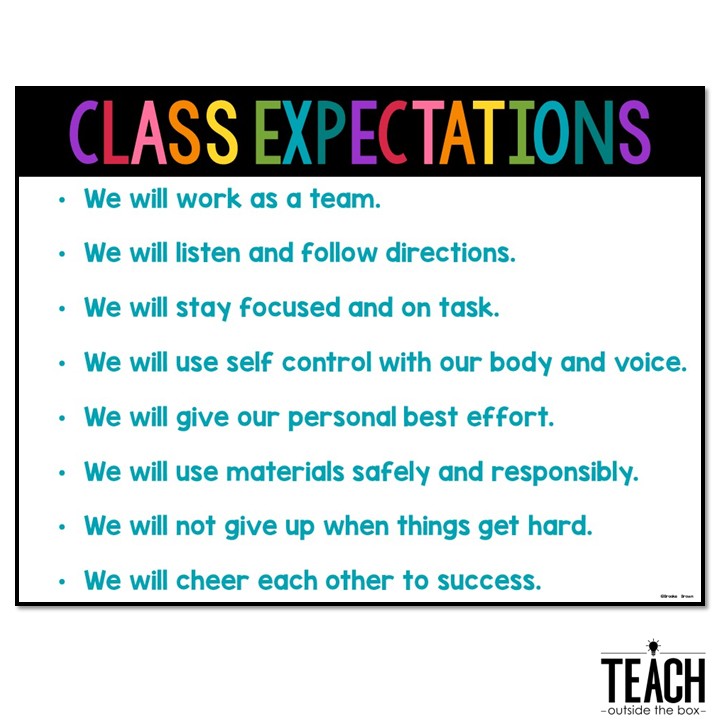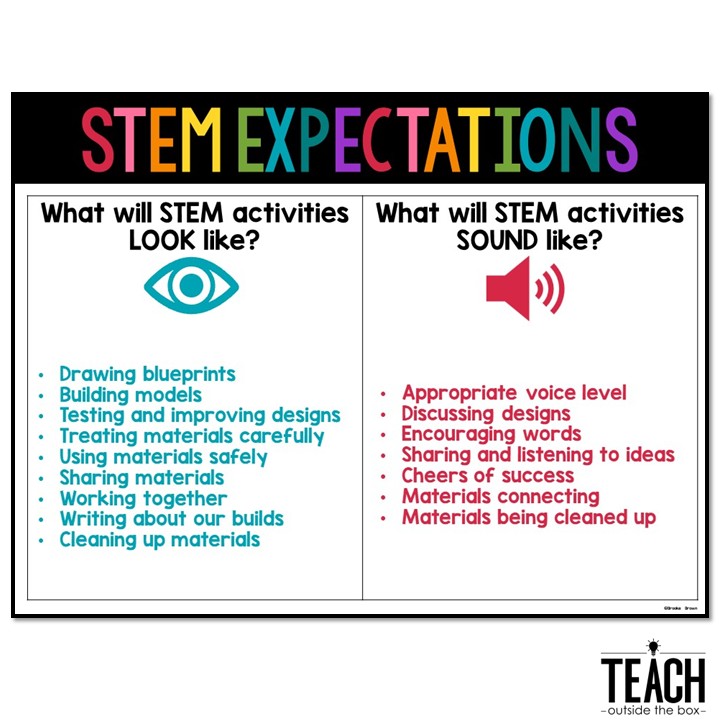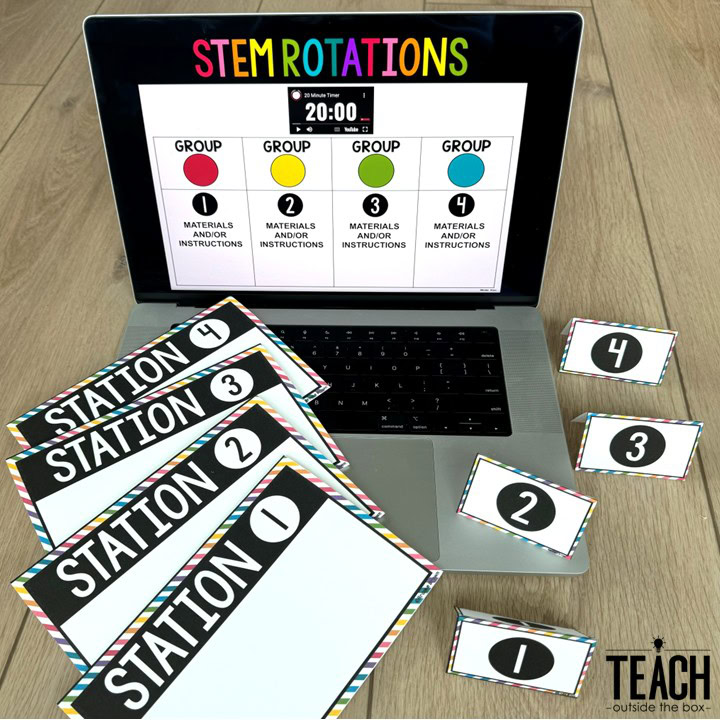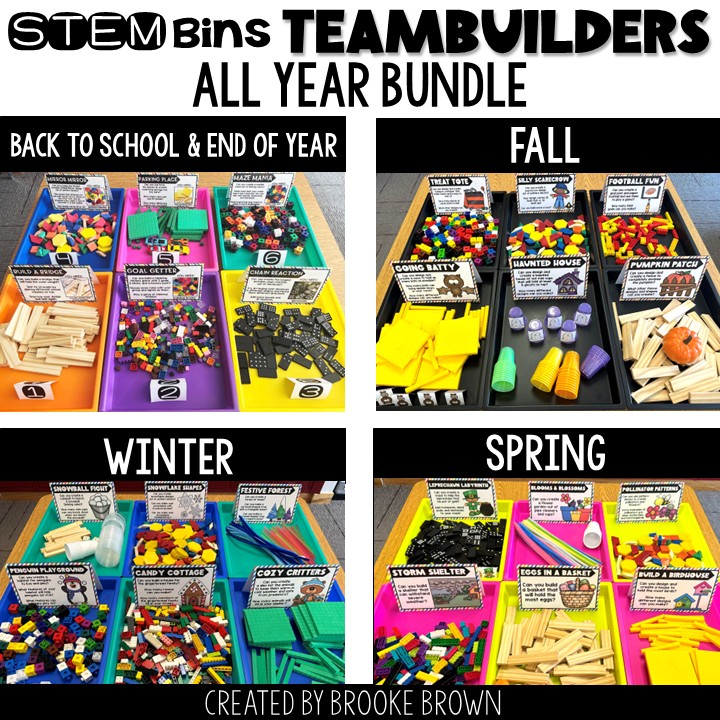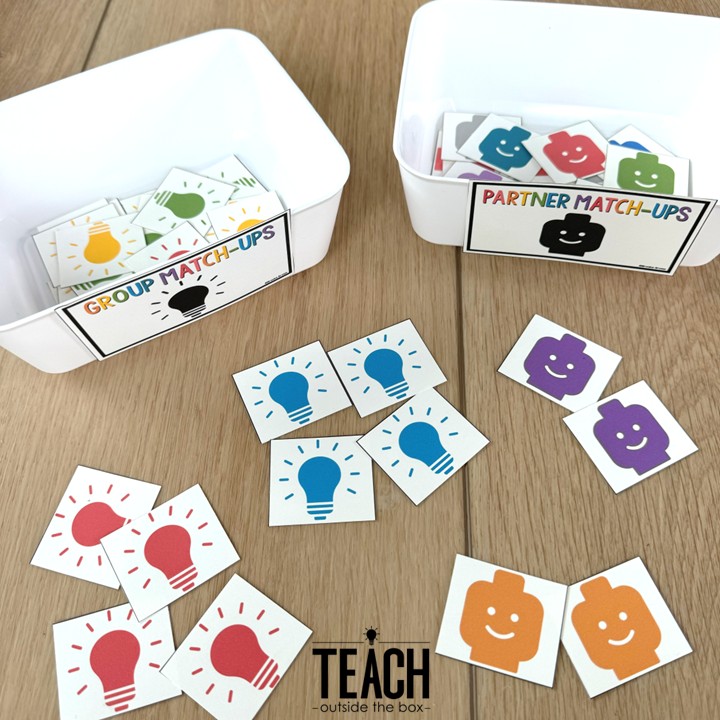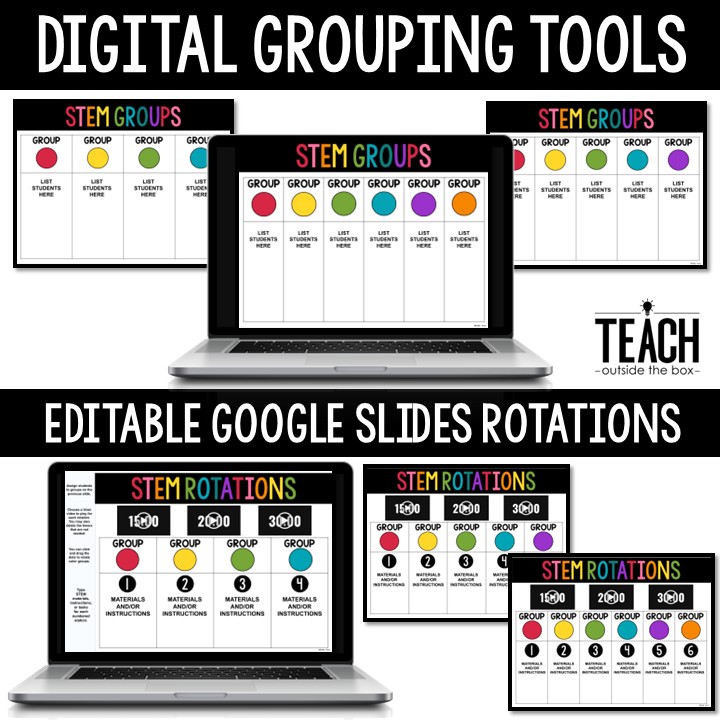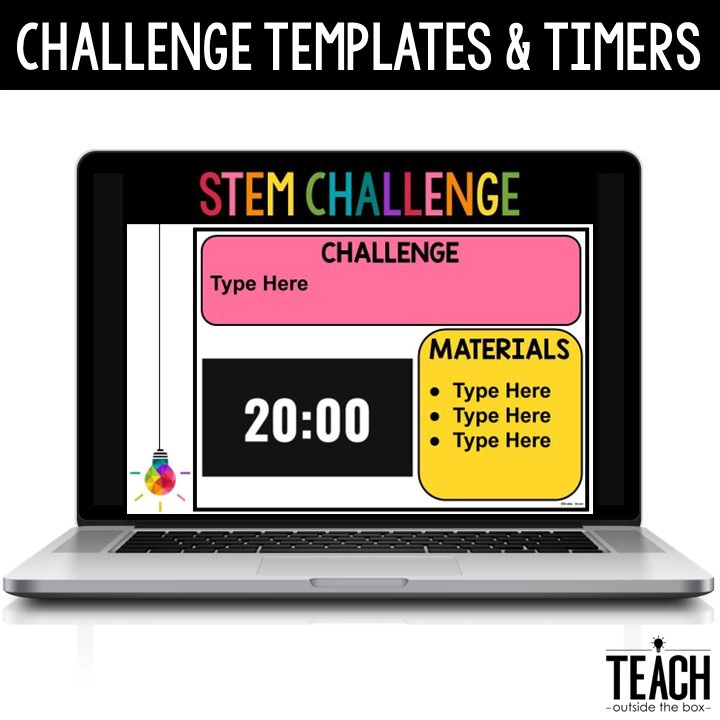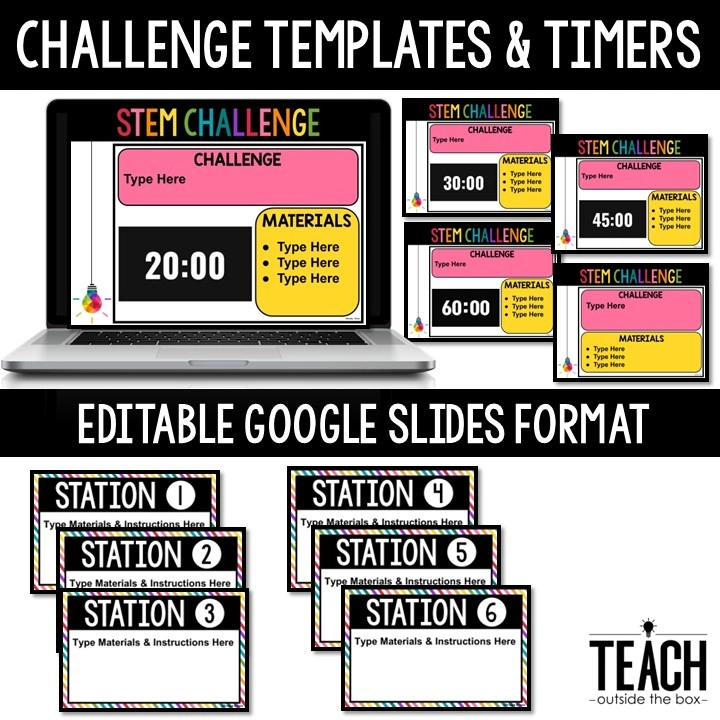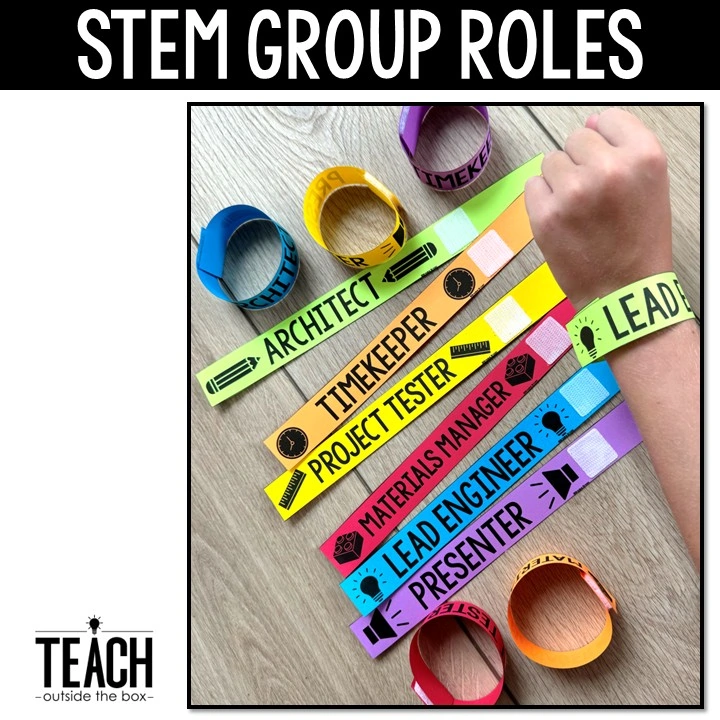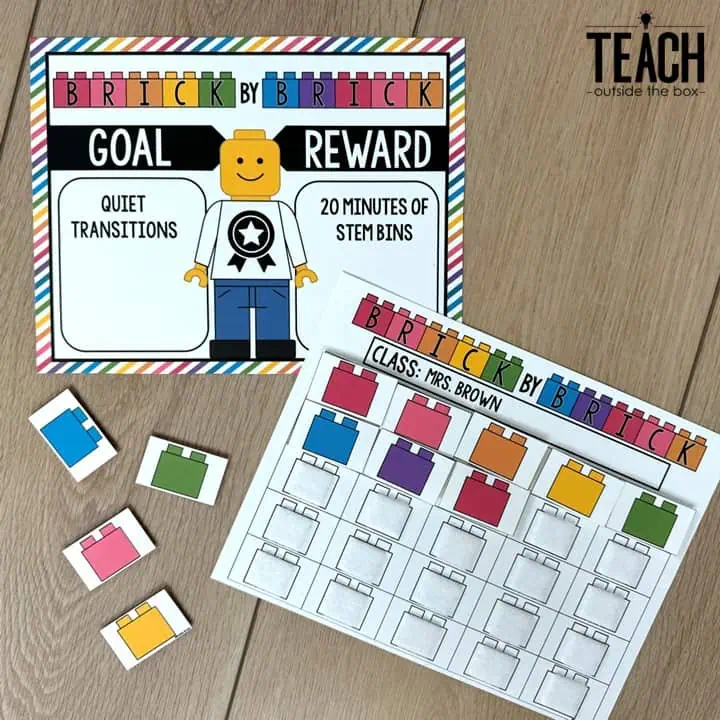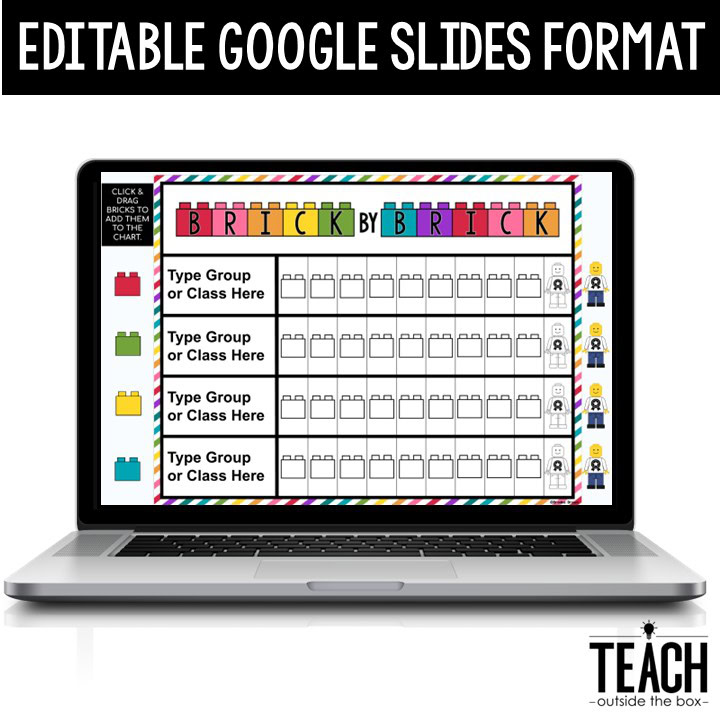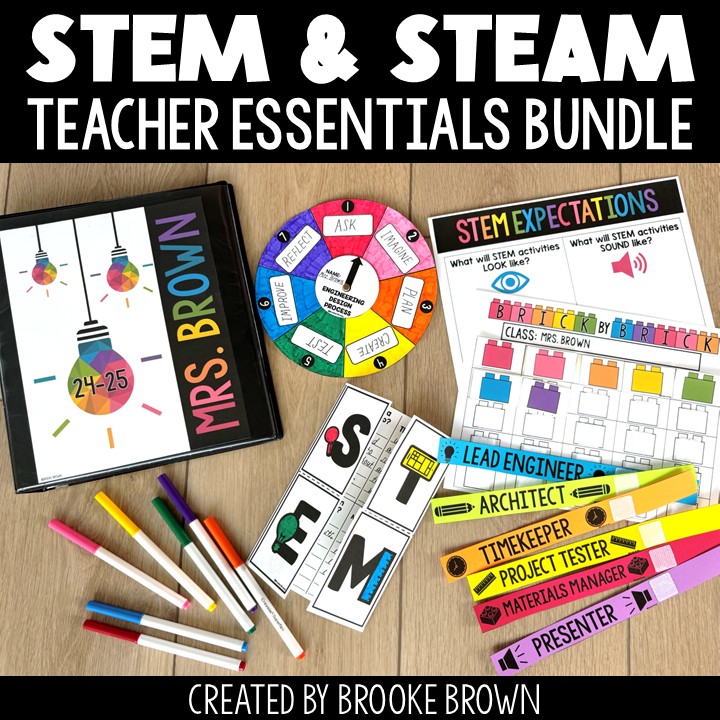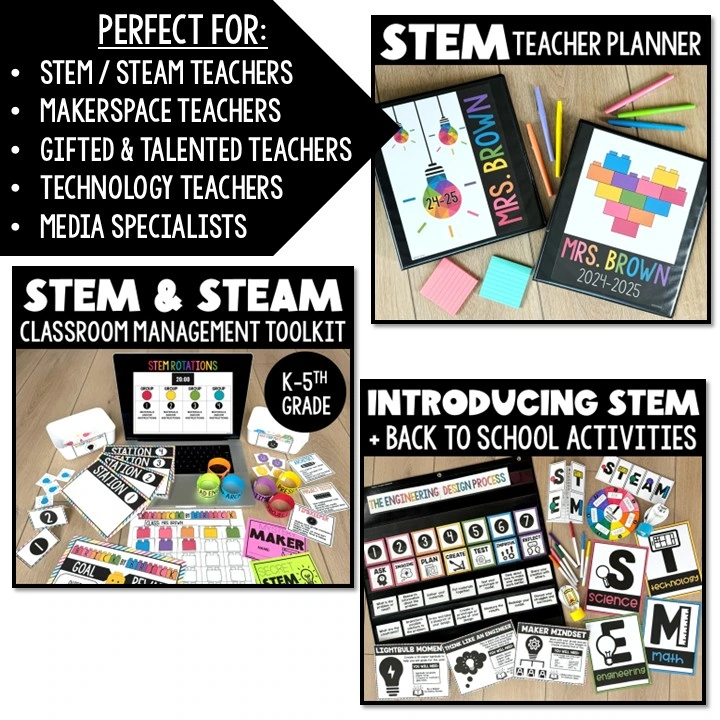Secrets of STEM Classroom Management
Ready to learn all my secrets for effective classroom management in your STEM classroom?! As a Gifted and Talented teacher with over 20 total years of teaching experience, I’ve learned many tips and tricks over the years that I’ve added to my classroom management tool belt. Teaching multiple classes and grade levels can bring many unique challenges, including limited time, excessive planning and prep, student behavior challenges, and more. Often, it can feel very overwhelming to manage all of our “spinning plates.”
Over the years, I’ve learned that setting up my classroom for success on day one is the most effective strategy. Taking the time and effort to build meaningful relationships with my students, practicing classroom procedures, and establishing shared expectations are guaranteed ways to get our school year started on the right foot. After all, one of the biggest joys of teaching STEM is the actual teaching part, am I right? The last thing that we want to spend our time doing is managing behaviors.
Bottom line? All the work we put in with our students now will lead toward our ultimate goal:
Set Up for STEM Success
Here are my secrets of STEM Classroom Management. I’ll dive into each area in detail throughout this post!
STEM Classroom Procedures
Establishing clear and specific classroom procedures is the first and most important strategy for a successfully managed STEM classroom. From entering and exiting the classroom, to attention getters, to supply organization, each and every procedure must be thoughtfully planned in advance. From my first year of teaching way back when, I’ve used a checklist similar to the one shown below to help me track each procedure as it is (1) taught, (2) modeled, (3) practiced, and (4) reinforced throughout the first days and weeks of the school year. It is also helpful to have a slideshow that you can use as a visual aid when reviewing procedures with multiple classes.
Here are a few suggestions for classroom procedures that you might review and discuss with your students at the beginning of the school year:
STEM Classroom Expectations
After reviewing and practicing procedures, hold a class meeting to establish a shared list of Class Expectations that are developmentally appropriate for your students. This will encourage a shared classroom community, mutual environment of respect, and buy-in from your students. Here are a few examples of expectations that students may generate:
You may also choose to hold a class discussion to complete a “Looks Like/Sounds Like” chart to further clarify student expectations for STEM Activities. These are helpful to display in the classroom and refer to throughout the school year as needed.
STEM Centers and Rotations
For larger classes of students or shorter class sessions, STEM centers and Rotations can be a life saver. These centers can also be continued for multiple weeks. For example, my first grade GT groups complete two 20-minute STEM stations one week, and another two stations the following week. The station cards and digital rotation charts pictured below can be adapted for any STEM activities:
One of my favorite go-to resources for STEM centers is my STEM Bins Teambuilders! These seasonal STEM stations are low prep, differentiated for both lower and upper grades, and are a huge hit with my students.
Student Grouping Tools
When my students are completing STEM activities, rotating through STEM stations, or coding with robots, I always place them with partners or small groups. The following cards allow me to partner and group students randomly. The cards are also color-coded to align with the digital rotation charts shown below. Simply count out the cards to match the number of students in your class, with one color for each group (i.e. 4 groups = 4 different colors), then mix up the cards in a baggie or tub. Students draw a card, then find their matching color for their partner or group. There are 4 different shape options provided for grouping students with labels for each shape: LEGO, lightbulbs, gears, and robots.
Time Management
You might also consider using digital timers to help your students manage their work time. This is especially helpful for clean-up time! The following Google Slides have fillable digital templates for STEM/STEAM challenges that you can use for any STEM activity, and there are slides with timers included for 20, 30, 45, and 60 minutes
Looking for low prep STEM Challenges for the Entire Year?! Check out my best-selling STEM All Year Bundle with 36 favorite Seasonal STEM Activities.
STEM Group Roles
If you would like to provide more structure and responsibility for your students with cooperative group roles during STEM/STEAM challenges, check out these STEM Group Role cards and bracelets. You may also have students share roles. Keep in mind that all group members should be participating in the overall design, build, and improvement of the project. Also, you will want to consider the age and abilities levels of your specific students before assigning roles. The STEM Group Role bracelets can be printed on different colors of paper to match each color group, laminated, and stapled for repeated uses. You may also add Velcro dots so that they are easy for students to put on and take off.
Group Incentives
A class reward can be a wonderful way to motivate students to meet a specific behavioral goal. The following “Brick by Brick” chart can be used to determine a whole class goal with a reward. Simply stick a brick on the chart every time the class meets the designated goal and when the class earns the predetermined number of bricks, they will receive a reward.
You may also use a Digital Google Slides version of the “Brick by Brick” rewards system:
Individual Student Incentives
You may also choose to give out individual reward certificates such as those pictured below. At the beginning of class, the teacher will randomly select a student that is the “Mystery Maker,” “Secret STEM Student,” or “Secret STEAM Student.” The name of this student is kept secret until the end of class. At the end of class, if the Mystery or Secret student demonstrated satisfactory behavior, their name will be revealed and they will receive a reward certificate. If behavior goals are not met, the student’s name is kept secret and no reward certificate is given. (You may also choose to give out an award to a different student who has gone particularly above and beyond that day.)
Looking for ALL my STEM and STEAM Classroom Management tools in one place?! Check out my STEM & STEAM Classroom Management Toolkit!
You can also grab my STEM & STEAM Teacher Essentials BUNDLE with my Classroom Management Toolkit, STEM Teacher Planner, and Back to School STEM Activities / Introducing STEM & the Engineering Design Process.
